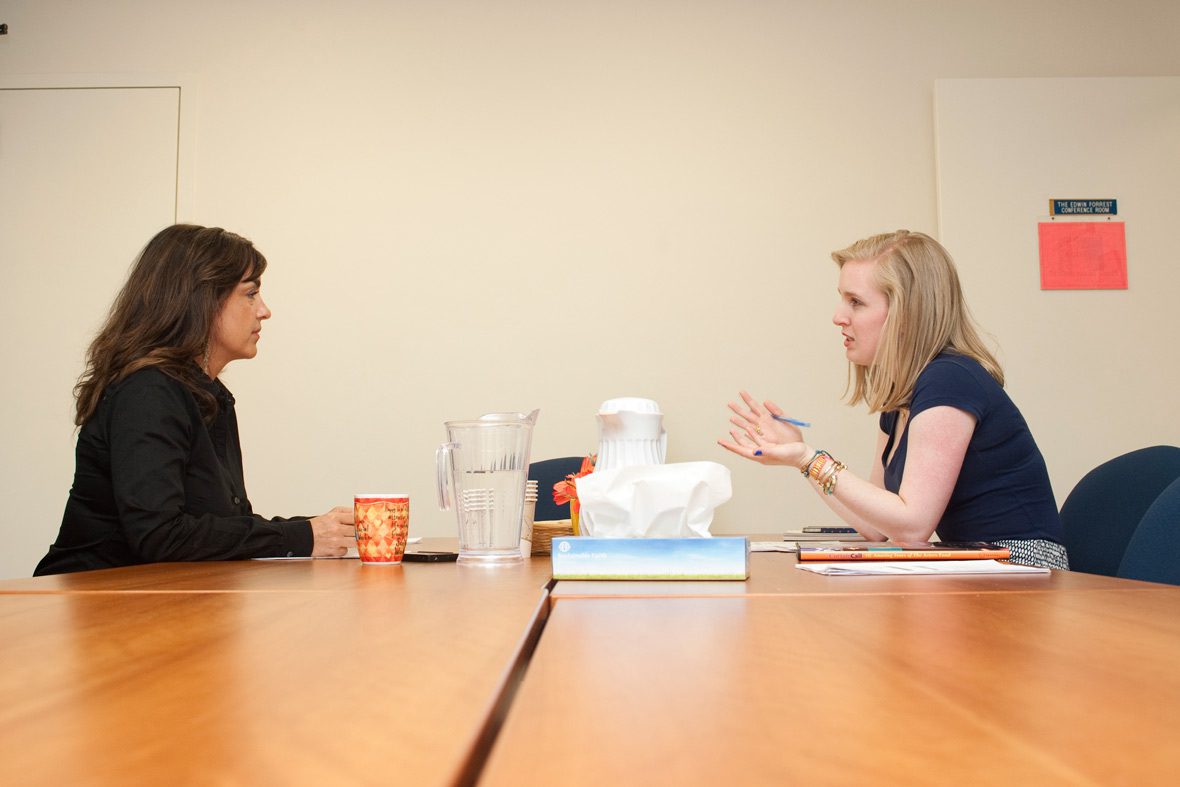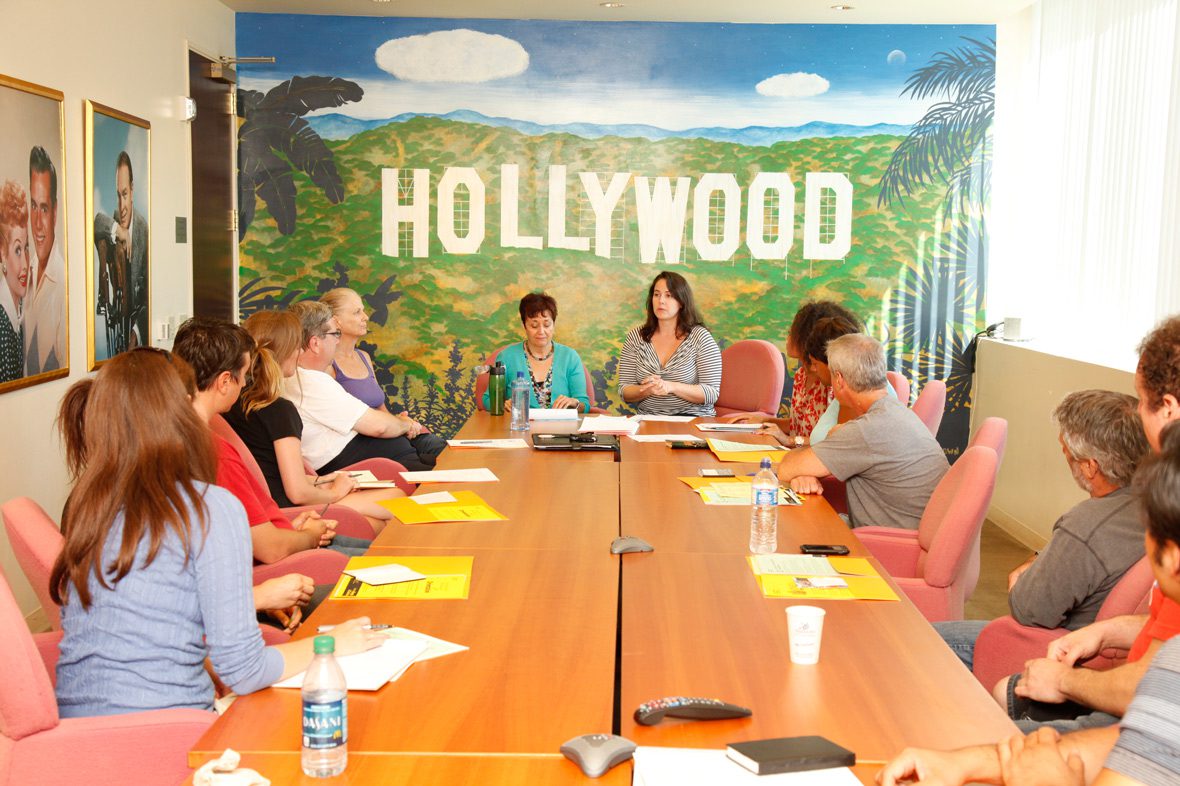By Jacqueline Brennan
(Through the Eyes of Barbara Davis)
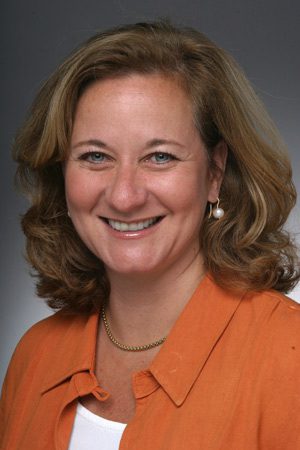
Barbara Davis, Chief Operating Officer The Actors Fund (New York, NY)
The rallying cry that started The Actors Fund was the death of an actor in a traveling company in 1879.
“At that time, actors—and everyone who worked in production—were often considered disreputable, and weren’t allowed to be buried on consecrated grounds,” says Barbara Davis, chief operating officer of The Actors Fund. “They were considered vagabonds at a time before unions or entitlements existed.”
Because of the episodic nature of their work and low pay, theater and other performing arts professionals often had difficulty taking care of basic needs like food and shelter, and had nowhere to turn for help in times of crisis. Under those conditions, The Actors Fund was founded in 1892.
From purchasing cemetery plots for performing artists after the American Civil War to providing a wide array of human services today in three different time zones, Davis talks about the day-to-day challenges of leading an organization that has supported the well being of performing artists for 133 years.
The Actors Fund Today
Today, The Actors Fund is a national human services organization that helps everyone who works in performing arts and entertainment—from performers to those behind the scenes. Serving professionals in film, theater, television, music, opera, radio, and dance, The Fund’s programs include social services, emergency financial assistance, health care, insurance counseling, housing, employment, and training services. With offices in New York, Los Angeles, and Chicago, The Actors Fund is a safety net for those in need, crisis, or transition.
Although the reputation of theater and entertainment professionals has changed since The Actors Fund was founded, many of the problems performing artists face have not. Seasonal and episodic work results in chronic underemployment, low wages, and lack of health insurance. A work-related injury or illness can completely derail a career and income. An interruption of work because of illness may result in lost wages, rent arrears, credit problems, and other financial issues. The Actors Fund’s programs and services have been developed to address these needs.
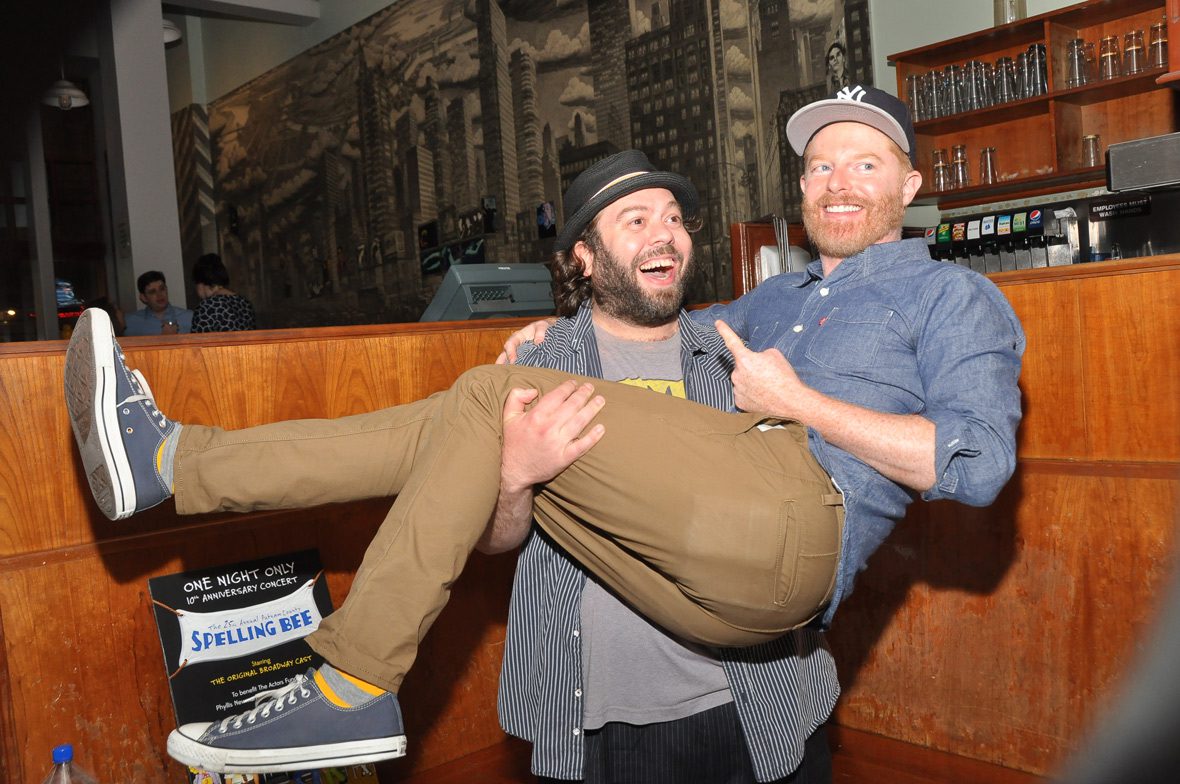
Jesse Tyler Ferguson and Dan Fogler, along with the rest of the original Broadway cast members of The 25th Annual Putnam County Spelling Bee, convened in July 2015 for a special one-night-only, 10-year anniversary benefit show for The Actors Fund.
Communication
We make a concerted effort to communicate between regions, to accept differences that are local, and to listen to each other. Sometimes the differences require more energy and effort to understand when you don’t have face-to-face interaction. Email can be dangerous, because you can’t infer tone. On both coasts, we say, “Pick up the phone.” We make sure that we’re problem-solving together. It helps to spend time together because whatever challenges you normally face in an office—they are multiplied by being in different locations.
Stability
Most people in the performing arts don’t consistently support themselves through their craft. Rather than approaching their secondary work as sporadic, the Actors Fund’s Career Center focuses on helping them develop meaningful parallel or secondary career utilizing their transferable skills, passions, and interests. Our country is moving towards a greater “gig” economy, similar to how artists have always had to work —sometimes out of choice, and sometimes out of need — requiring flexibility, creativity, and planning.
The Actors Fund has always tried to be responsive to the needs of the community. To be able to work on your craft, you also need to have a healthy life. How we can support that is through helping people create stability in a work life that is unstable. Whether you’re talking about a dancer, a hair/makeup stylist, or a crew member: the nature of the business is universally unstable, and we consider how that impacts day-to-day living. Whether you’re a 28-year-old performer and you’ve moved to a new city and you need a place that’s affordable to live, or you’re just wondering, “What happens if all the sudden I don’t have income for two weeks?” We need to make sure we’re giving them the tools to help them plan and understand services that are available to them.
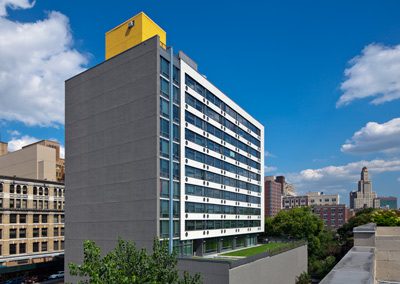
In response to demand for affordable housing, The Actors Fund and Common Ground Community came together and opened the Schermerhorn, a 217-unit affordable housing residence in downtown Brooklyn, in 2009. Credit: David Sundberg-Esto for Ennead Architects
There are other organizations who provide emergency financial assistance. But for most of them, that financial help is their service. At the Actors Fund, financial assistance is coupled with educational and support services to prevent the problems from recurring. It’s important that our staff approaches change from a place of respect. Many of our professional staff—including licensed social workers and career counselors—are from the entertainment industry, and have made career transitions. They understand the issues from both a personal and professional perspective.
With much of The Fund’s staff having a performing arts pedigree, the organization fittingly takes after the spirit of the community they serve. Davis shares that they place equal emphasis on the roles of collaboration and adaptability in designing and delivering services.
Collaboration
The nature of performing arts is collaborative. An actor can’t perform without the stagehand, the lighting designer, and so on. It’s all about partnerships, and that’s very much the way we work. Working collaboratively with other organizations to achieve our goals is critical. An example that gave rise to something lasting was after Hurricane Katrina. Staff from various arts service organizations, arts councils, and arts funders came together to address the needs of musicians and other artists impacted. Out of that grew a National Coalition for Arts Preparedness and Emergency Response. Together, we are much better prepared because we are sharing knowledge and resources.
For us, the last year’s been dynamic and interesting. We’ve had three organizations integrate into The Actors Fund. In January 2015 the Entertainment Industry Referral and Assistance Center (EIRAC) joined us. They were created thirty years ago as an employee assistance program for the film and television studios. We have worked closely with them since inception, and this year they have become part of The Actors Fund, allowing us to open an office in Burbank. In September, we became the fiscal sponsor and home to the Research Center for Arts and Culture. Together we will be working on a legacy project for older performing artists. This winter, Career Transition for Dancers is joining The Fund, allowing us to strengthen our services and outreach to the dance community around the country.
-

Booth-Actors-Home-13117
As its oldest service, The Actors Fund has offered assisted living to elderly performing artists since 1908. The Lillian Booth Actors Home has been in Englewood, NJ since 1928, and is home to 124 entertainment professionals today.
-

LA-Office-1-3117
Both the LA and NYC offices host weekly orientations as part of their Career Center services. The Career Center assists entertainment and performing arts professionals in finding sideline work and starting new careers.
Adaptability
Our Artists Health Insurance Resources Center is a testament to our efforts to change with the times. It was opened at the height of the AIDS epidemic, and was initially funded by a grant from the National Endowment for the Arts. Then, and still today, we realized that rather than just providing money for care, we needed to help people get insurance and access to affordable care. At that time, a third of the people in performing arts community were uninsured. With the passage of the Affordable Care Act, we are now insurance navigators for the exchanges in New York and California.
We’re always trying to anticipate what the next issues are going to be and how we can reshape ourselves to get ahead of that curve. Working toward that future with our nursing home/assisted living facility, we are now in the middle of a $25 million reconstruction process for a building that was built in 1959. In addition, there’s a growing demand for assisted living for memory care—for those who cannot live independently at home, but don’t want more restrictive environments. We are also building a sub-acute care unit for short-term rehabilitative stays that help people return home after an injury or illness. In working to address the growing demand in this area and others, even our nursing home—the most stable service we provide—is changing with the times.
We are challenged to re-evaluate our services when a program is no longer needed. Should it be closed or changed? That is the conversation around our Free Health Clinic. Since it doesn’t make sense to keep a free clinic with the Affordable Care Act, we had to decide whether we could repurpose the clinic and create a primary care health center for the performing arts that addresses the new problems we are seeing—continuity of care and high deductibles. We’ll have more on that next year.
In charting our vision and progress, one of the things I think we’ve done well is constantly look at what we’re doing and how we’re doing it. We’re about to begin the process of creating a new strategic plan. Our last strategic planning wave was five years ago, and we write an annual action plan every year in conjunction with our budgeting process. We have to consider the same questions every year. How are we implementing the plan this year? What’s changed? What hasn’t changed? Going through that effort makes you continue to think things through while looking for consistency and follow-through. We recently had a human resource staff advisory committee meeting and they were asked to look at our vision statement, and spend an hour asking, “Okay, should this be our vision statement? What’s missing, what feels different? Is it truly reflective of our most important values?” We do try and keep all of this alive, and by doing that, we’re always reshaping things. It helps coordinate our vision to execution.
Jacqueline Brennan is the associate for social media and web at Independent Sector.

